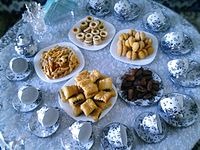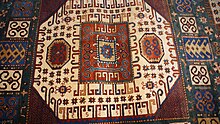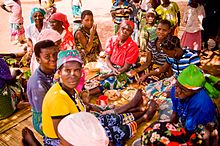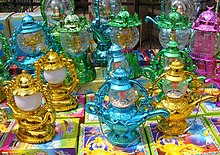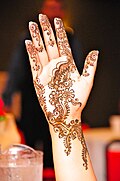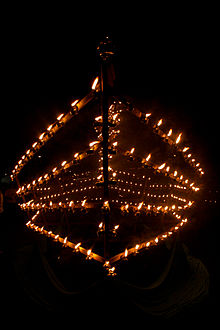HEADLINE-RELIGION | Happy Eid-ul-Fitr 2023: Muslims begin Idul Fitri prayers, celebrations on Friday
General view of Muslims performing evening prayers on the 29th Ramadan at the Grand Mosque during the holy month of Ramadan, in the holy city of Mecca, Saudi Arabia, April 20, 2023. (Reuters/Saudi Press Agency)
.

Saudi Arabia, home to Islam’s holiest shrines, and other Sunni Muslim countries announced Thursday the holiday of Idul Fitri marking the end of the Ramadan fast will begin on Friday.
In some countries, including Indonesia and Malaysia, authorities have said the holiday will start on Saturday.
“Tomorrow, Friday, is the first day of Idul Fitri for this year,” with Thursday the last day of the holy month of Ramadan, the official Saudi Press Agency said on its Twitter account, citing a royal court statement, as quoted by AFP.
.
The timing of Idul Fitri is determined by the sighting of the crescent moon, which may appear at different times in many parts of the world, in accordance with the Muslim lunar calendar.
The holiday is normally celebrated with family gatherings.
Authorities in the United Arab Emirates, Qatar, Jordan and Sudan also announced Idul Fitri will start on Friday.
In Lebanon, Sunni clerics said the holiday will begin on Friday, while some Shiite leaders announced a Saturday start to the holiday.
Libya, ruled by two rival administrations, will mark Idul Fitri on Friday in the country’s east and on Saturday in areas under the control of the Tripoli-based government.
Statements from Iran’s supreme leader Ayatollah Ali Khamenei and Iraq’s highest Shiite authority, Grand Ayatollah Ali Sistani, said Idul Fitri would start on Saturday in their countries.
In Oman, too, the holiday will start on Saturday.
The daytime fasting month of Ramadan is one of the five pillars of Islam.
Observant Muslims refrain from eating and drinking from dawn to dusk, and traditionally gather with family and friends to break their fast in the evening.
It is also a time for prayer, with the faithful converging in large numbers on mosques, especially at night.
Fasting is widely practiced in Saudi Arabia, home of the holiest shrines in Islam in Mecca and Medina.
Saudis are expected to observe a four-day holiday for Idul Fitri.
…
Eid al-Fitr
| Eid al-Fitr | |
|---|---|
|
.
From top: Muslims performing the Eid prayer at Suleymaniye Mosque, Istanbul, Turkey; cakes and sweets, which are popularly consumed during the celebration in Algeria; a sparkler being lit during Eid celebrations in Indonesia
|
|
| Official name | Arabic: عيد الفطر, romanized: Eid al-Fiṭr |
| Also called | Festival of Breaking the Fast, Lesser Eid, Sweet Eid, Sugar Feast |
| Observed by | Muslims |
| Type | Islamic |
| Significance | Commemoration to mark the end of fasting in Ramadan |
| Celebrations | Eid prayers, charity, social gatherings, festive meals, gift-giving, dressing up, Lebaran |
| Date | 1 Shawwal[1] |
| 2023 date | 21 – 22 April[a][2] |
| 2024 date | 10 – 11 April |
| Related to | Ramadan, Eid al-Adha |
Eid al-Fitr (/ˌiːd əl ˈfɪtər, –trə/; Arabic: عيد الفطر, romanized: Eid al-Fiṭr, lit. ‘Holiday of Breaking the Fast’, IPA: [ʕiːd al ˈfitˤr])[4] is the earlier of the two official holidays celebrated within Islam (the other being Eid al-Adha). The religious holiday is celebrated by Muslims worldwide because it marks the end of the month-long dawn-to-sunset fasting of Ramadan.[5] It falls on the first day of Shawwal in the Islamic calendar; this does not always fall on the same Gregorian day, as the start of any lunar Hijri month varies based on when the new moon is sighted by local religious authorities. The holiday is known under various other names in different languages and countries around the world. The day is also called Lesser Eid, or simply Eid.[6]
Eid al-Fitr has a particular salat (Islamic prayer) that consists of two rakats (units) generally performed in an open field or large hall. It may only be performed in congregation (jamāʿat) and features seven additional Takbirs (raising of the hands to the ears while saying “Allāhu ʾAkbar”, meaning “God is the greatest”) in the Hanafi school of Sunni Islam: three at the start of the first rakat and three just before rukūʿ in the second rakat.[7] Other Sunni schools usually have 12 Takbirs, similarly split in groups of seven and five. In Shia Islam, the salat has six Takbirs in the first rakat at the end of qira’a, before rukūʿ, and five in the second.[8] Depending on the juristic opinion of the locality, this salat is either farḍ (فرض, obligatory), mustaḥabb (strongly recommended) or mandūb (مندوب, preferable). After the salat, Muslims celebrate the Eid al-Fitr in various ways[9] with food (“Eid cuisine“) being a central theme, which also gives the holiday the nickname “Sweet Eid” or “Sugar Feast”.
History
According to Muslim tradition Eid al-Fitr was originated by the Islamic prophet Muhammad.[12] According to certain traditions, these festivals were initiated in Medina after the migration of Muhammad from Mecca. Anas, a well-known companion of the Islamic prophet, narrated that, when Muhammad arrived in Medina, he found people celebrating two specific days in which they entertained themselves with recreation and merriment. At this, Muhammad remarked that God had fixed two days of festivity: Eid al-Fitr and Eid al-Adha.
General rituals
Traditionally, Eid al-Fitr begins at sunset on the night of the first sighting of the crescent moon. If the moon is not observed immediately after the 29th day of the previous lunar month (either because clouds block its view or because the western sky is still too bright when the moon sets), then the holiday is celebrated the following day.[14] Eid al-Fitr is celebrated for one to three days, depending on the country.[15] It is forbidden to fast on the Day of Eid, and a specific prayer is nominated for this day.[16] As an obligatory act of charity, money is paid to the poor and the needy (Zakat-ul-fitr) before performing the ‘Eid prayer.
Eid prayer and eidgah
The Eid prayer is performed by the congregation in an open area such as a field, community center, or mosque.[15] No call to prayer is given for this Eid prayer, and it consists of only two units of prayer, with a variable amount of Takbirs and other prayer elements depending on the branch of Islam observed. The Eid prayer is followed by the sermon and then a supplication asking for God’s forgiveness, mercy, peace and blessings for all living beings across the world. The sermon also instructs Muslims as to the performance of rituals of Eid, such as the zakat.[18] The sermon of Eid takes place after the Eid prayer, unlike Friday prayer which comes first before prayer. Some imams believe that listening to the sermon at Eid is optional.[19] After the prayers, Muslims visit their relatives, friends, and acquaintances or hold large communal celebrations in homes, community centers, or rented halls.[15]
Many Muslims often bring prayer rugs to the Mosque on Eid al-Fitr.
Sunni procedure
As ritual dictates, Sunnis praise God in a loud voice while going to the Eid prayer:
Allāhu Akbar, Allāhu Akbar. Lā ilāha illà l-Lāh wa-l-Lāhu akbar, Allahu akbar wa-li-l-Lāhi l-ḥamd
Recitation ceases when they get to the place of Eid or once the Imam commences activities.[20]
The prayer starts by doing “Niyyah“ for the prayer, before the Takbir is said by the Imam and his followers. Next, the Takbirat al-Ihram is performed, by saying Allahu Akbar three times, raising hands to the ears and dropping them each time, except for the last when the hands are folded. The Imam then reads the Al-Fatihah, followed by another Surah. The congregation performs ruku and sujud as in other prayers. This completes the first rak’ah.[citation needed]
The congregation rises up and folds their hands for the second rak’ah, after which the Imam recites Surah Fatiha followed by another Surah. After this, three Takbirs are called out just before the ruku, each time raising hands to the ears and dropping them. For the fourth time, the congregation says Allahu Akbar and subsequently goes into the ruku. The rest of the prayer is completed in the regular manner. This completes the Eid prayer. After the prayer, there is a khutbah.[21]
Shia procedure
The prayer starts with the Niyyat followed by five Takbirs. During every Takbir of the first rakat, a special Dua is recited. Then, the Imam recites Sūrat al-Fātiḥah and Surat Al-‘A`lá and the congregation performs Ruku and Sujud as in other prayers. In the second Rakat, the same above steps (five Takbeers, Sūrat al-Fātiḥah and Surat Al-‘A`lá, Ruku and Sujud) are repeated. After the prayer, Khutbah starts.[22]
Post-prayer celebration
A panorama in 12 folds showing an imperial Eid al-Fitr procession by Bahadur Shah II (Mughal Empire, present day Indian subcontinent/Afghanistan/Iran)
During the Eid celebration, Muslims greet each other by saying ‘Eid Mubarak’, which is Arabic for “Blessed Eid”. As it comes after a month of fasting, sweet dishes and foods are often prepared and consumed during the celebration. Muslims typically decorate their homes, and are also encouraged to forgive each other and seek forgiveness. In countries with large Muslim populations, it is normally a public holiday with most schools and businesses closed for the day. Practices differ by country and region.
Practices and culture by country
West Asia
A girl with henna on her hand, during the Eid prayer
Arab States of the Persian Gulf
In the United Arab Emirates and other Arab states of the Persian Gulf countries like Qatar, men would typically buy new Kandora (traditional white long robe) or dye their existing Kandoras with walnut oil. Women would wear special clothes for the occasion along with special perfumes and braids. Most majlises would offer fruits, dates, tea or coffee to visitors. Those who live in rural areas tend to celebrate more modestly.[24] Buildings, shops, roads and houses in UAE cities get decorated in bright festive lights.[25] Many shows such as theatres would also occur.[26]
In Bahrain, families often celebrate the festival with an eid dinner consisting of quzi or machboos rice dishes, while popular sweets include halwa or khanfroosh (see Bahraini cuisine). Men typically wear thawbs and women wear abayas, the latter also painting Arabic henna tattoos on their hands or feet.[27]
Saudis decorate their homes and prepare sumptuous meals for family and friends. They prepare new clothes and shoes for the festival. Eid festivities in Saudi Arabia may vary culturally depending on the region, but one common thread in all celebrations is generosity and hospitality. It is a common Saudi tradition for families to gather at the patriarchal home after the Eid prayers. Before the special Eid meal is served, young children will line up in front of each adult family member, who dispense money as gifts to the children.[28]
Omanis would typically eat foods such as shuwa with kahwa coffee (see Omani cuisine). In some places such as Ibri, folklore songs and traditional dancing are often performed.[29]
Kids in Qatif wearing traditional costumes and carrying textile bags to collect candy
Children gather in small choir groups in front of a home and sing. The song is intended to call on God to bless the youngest child of the family, to keep him or her healthy that the mother will remain happy. The more they sing, the more nuts and sweets they receive. The Qarqee’an tradition is intended to spread love, happiness and affection among adults and children Gargee’an.[citation needed]
In modern times, supermarkets, corporates, and malls compete to attract children during this time via advertising in newspapers and on TV, and by offering special promotions and arranging closed Qarqee’an events to market themselves.[30]
Iran
Eid al-Fitr feast postage stamp of Iran (1984)
In Iran, at the last days of the month of Ramadan, several groups of experts representing the office of Ayatollah Khamenei go to the different zones of the country to determine the date of Eid al-Fitr.[31] Iranian Muslims take part in the Eid al-Fitr prayer and pay the Zakat al-Fitr.[32] The Eid al-Fitr prayer, and the following sermon, has been led by Ayatollah Seyyed Ali Khamenei, Supreme Leader of Iran, at Tehran‘s Imam Khomeini Grand Prayer Grounds (Mossalla).[33] The celebration is typically marked by a one- or two-day national holiday.[34]
Turkey
Traditional Bayram wishes from the Istanbul Metropolitan Municipality, stating “Let us love, Let us be loved”, in the form of mahya lights stretched across the minarets of the Blue Mosque in Istanbul
In Turkey, nationwide celebrated holidays are referred to as bayram, and Eid al-Fitr is referred to as both Ramazan Bayramı (“Ramadan Bayram“) and Şeker Bayramı (“Bayram of Sweets/Sugar”). It is a time for people to attend prayer services, put on their best clothes (referred to as bayramlık, often purchased just for the occasion), visit all their loved ones (such as relatives, neighbors, and friends), and pay their respects to the deceased with organised visits to cemeteries. It is also customary for young children to go around their neighborhood, door to door, and wish everyone a “Happy Bayram“, for which they are awarded candy, chocolates, traditional sweets such as baklava and Turkish delight, or a small amount of money at every door.[35]
Mosques, minarets and public fountains tend to be lighted up for the occasion, and popular events such as Sufi music concerts and dervish dancing ceremonies, Shadow Puppets show are held in the nights.[36]
Palestine, Jordan, Syria, Lebanon
After the Eid al-Fitr prayer, the people of Jerusalem will decorate the courtyards of the Al-Aqsa Mosque with toys for children who come from all Palestinian areas to participate in the Eid al-Fitr prayer rituals. Many Palestinians go out to visit the families of those imprisoned, visit the prisons themselves, and visit the graves of the martyrs to lay wreaths on them.[37]
A day before Eid, Al-Aqsa Mosque is decorated with Eid decorations, minarets chant with takbeer, and the old markets are filled with children and women carrying trays of cakes towards bakeries.[citation needed]
Palestinians and Jordanians, decorate their homes and prepare sumptuous meals for family and friends. They prepare new clothes and shoes for the festival. Eid festivities in Palestine and Jordan may vary culturally depending on the region, but one common thread in all celebrations is generosity and hospitality. It is a common Palestinian Jordanian tradition for families to gather at the patriarchal home after the Eid prayers. Before the special Eid meal is served, young children will line up in front of each adult family member, who dispense money as gifts to the children. Jordanians would also hang fanous lanterns.[23]
In Lebanon, many concerts take place during Eid al-Fitr by Lebanese and other Arab superstars. Musicians also perform on the Beirut waterfront. Other activities include art exhibitions.[38]
Ma’amoul and Kahk are popular cookie treats baked and consumed during Eid in Palestine, Jordan, Syria and Lebanon.[39]
Iraq
In Iraq, kleicha (the traditional snack)[40] and lamb are popular foods.[41]
The Iraqi Kurds tend to visit cemeteries to remember their lost ones one day before the festival. After the prayers, Iraqi Kurdish families would gather together for large breakfasts of rice and stew, as well as candies, nuts and caffeinated beverages.[42]
Yemen
In Yemen, Bint al-sahn is the preferred snack during Eid celebrations.[43]
Africa
Group of Yao women sharing a meal of ugali during Eid ul-Fitr in Mozambique
Egypt
Egyptians spend the first day of Eid al-Fitr to gather all family members and celebrate the Eid at public gardens. It is customary for children to also receive an Eidi, a small sum of money to be spent on activities throughout the Eid.[44] Egyptians like to celebrate with others, so the streets are always crowded during the days and nights of Eid.[45]
Nigeria
Eid is popularly known as Small Sallah in Nigeria. During the day, people generally greet each other by saying Barka Da Sallah, which when translated means “Greetings on Sallah” in the Hausa language. The celebrations last as long as 3 days.[46]
Tunisia
Tunisia celebrates Eid for three days (with preparations starting several days earlier), two of which are national holidays. Special Sweets and biscuits, including Baklava and several kinds of “ka’ak“, marzipan, cookies are made or buy to give to friends and relatives on the day.[47] kids receive gifts from parents and elderly relatives, usually money or even toys. They also invite close friends and relatives for the Eid dinner. After Eid dinner people love to sing and dance. In the city of Sfax, a special meal is consumed on the first day generally before noon, composed essentially of Chermoula and cured salted fish, typically Bacalao.[citation needed]
Somalia
People at the ocean beach during Eid al-Fitr in Mogadishu
In Somalia and other Islamic parts of the Horn region, Eid al-Fitr is observed by the Muslim communities. Celebrations marking the event are typically accompanied by elaborate banquets, where special dishes such as xalwo (halwo) and buskut (buskuit) are served.[48]
Tanzania
Muslims in Tanzania celebrate Eid al-Fitr, when they normally dress in fine clothes and decorate their homes with lights. Special foods are prepared and shared with family and visitors, while children receive gifts.[49] In Zanzibar it is popular for locals to buy new clothing, while women would shop for handbags, necklaces and other clothing. For some youngsters Eid nights involve dancing at a club. Children would receive coins of money from locals.[50]
South Africa
Muslims in Durban during Eid al-Fitr prayers
In Cape Town, hundreds of Muslims—each with something to share with others at the time of the breaking of the fast—gather at Green Point in the evening of the last day of Ramadan for the sighting of the moon. The Maghrib (sunset) prayer is then performed in congregation and the formal moon-sighting results are announced thereafter.[51]
Morocco
Eid al-Fitr mass prayer in Morocco
Eid es-Seghir is the name of Eid al-Fitr among Moroccans. Many families have a tradition of buying new clothes for their children during the holiday. Common food choices for eid dinner include couscous, lamb or beef brochettes and others.[52] In the north, musicians play Andalusian music accompanied by fast clapping.[36]
Ethiopia
Eid is an important event for Muslims in Ethiopia, who form the largest Muslim community in East Africa.[53]
Sudan
In Sudan, where 97% of the population is Muslim,[54] preparations for Eid begin the last few days of Ramadan. For days, ka’ak (sugar powdered cookies), bettifour (dry baked goods including dainty biscuits, baked meringues and macaroons—whose name are derived from the French petit four), and popcorn are baked in large batches to serve to guests and to give to family and friends; dressy Eid clothes are either shopped for or sewn; girls and women decorate their hands and feet with henna; and parts of the house may even be painted. The night before Eid, the whole household partakes in cleaning the house and yard and setting out the finest bedsheets, table cloths, and decorations. On the day of Eid, men and boys (and occasionally women and girls) will attend the Eid prayer. For the next 3 days, families will then visit each other, extended family, neighbors, and close friends. In these short visits, the baked goods, chocolates, and sweets are served, and often large lunches are prepared for the visiting well-wishers. Children are given gifts, either in the form of toys or money.[55]
Senegal
The holiday is widely called Korité in Senegal and elsewhere across West Africa. It is a national holiday, celebrated for three days, with families normally having new clothes made for the holiday. Gifts and donations are normally exchanged.[56]
Ivory Coast
In the Ivory Coast, Eid is a large feast among Muslims. The celebration lasts between two and ten days depending on region.[57]
Central Asia
Tajikistan
In Tajikistan the holiday is known as Idi Ramazon[58] and is a national holiday.[59]
Kyrgyzstan
In Kyrgyzstan the day is known as Orozo Ait (Kyrgyz: Орозо айт). The local population celebrate in various ways such as by partying, eating and singing. Festivals often feature long distance horse racing and other horse-based sports. People would tend to wear fancy and bright clothes, while people would sing Jaramazan tunes and receive cooked bread, candy or cash in return.[60][61]
Uzbekistan
Ramazon Hayit or Roʻza hayiti is a public holiday in Uzbekistan and widely celebrated. Traditional pastry such as kush-tili, plov and chak-chak are prepared by Uzbek families the day before Eid al-Fitr for consumption. Businesses tend to sell a high range of candies and children’s toys during this period.[46]
Kazakhstan
Known as Oraza Ait (Ораза айт) Kazakh Muslims tend to visit each other during the celebration and handing out fried doughnuts such as baursaki to others. However mutton, soup, tea and kymyz (horse milk) are also popular food and drinks during the holiday.[62]
South Asia
Afghanistan
In the predominantly Sunni Muslim culture of Afghanistan, Eid al-Fitr holds significant importance and is celebrated widely for three days. It popularly involves special festivities for children and the youngest members of families.[63] The most common greeting is Kochnai Akhtar (Blessed Eid) in the Pashto-speaking community. Afghans start preparing for the Eid al-Fitr festival up to ten days prior by cleaning their homes (called Khana Takani in Dari). Afghans visit their local bazaars to buy new clothes, sweets, and snacks including Jalebi, Shor-Nakhod (made with chickpeas), Cake wa Kolcha (a simple cake, similar to pound cake). The traditional Bolani (vegetarian flatbreads) is a popular meal during Eid al-Fitr in Afghanistan.[63]
On the day of Eid al-Fitr, Afghans will first offer their Eid prayers and then gather in their homes with their families, greeting one another by saying “Eid Mubarak” and usually adding “Eidet Mobarak Roza wa Namazet Qabool Dakhel Hajiha wa Ghaziha,” which means “Happy Eid to you; may your fasting and prayers be accepted by God, and may you be counted among those who will go to the Hajj-pilgrimage.” Family elders will give money and gifts to children. It is also common practice to visit families and friends, which may be difficult to do at other times of the year. Children walk from home to home saying “Khala Eidet Mubarak” (“aunt happy Eid”), and they receive cookies or Pala. Young girls and women apply henna “tattoo”s on their hands and feet. The older women while applying it too, don’t do very complicated designs. The boys and young men in some communities might apply it as well but, with very simple designs like a circle in their palms or just coloring the fingertips. The older men might do those simple designs as well, but it is not that common. Henna is a “woman’s” thing in Afghanistan when it comes to doing designs on their hands and feet. At night, multiple campfires are set around houses, sometimes to the point that entire valleys may initially appear to be engulfed in flame. Celebratory fire with automatic rifles, particularly tracer rounds, can also be expected in high density.[64]
India
Eid is a public holiday in India. The holiday begins after the sighting of the new moon on Chand Raat. On that evening, people head to markets to finish their shopping for Eid, for clothing and gifts, and begin preparing their food for the next day. Traditional Eid food often includes biriyani, sheer khurma, and sivayyan, a dish of fine, toasted sweet vermicelli noodles with milk and dried fruit, among other regionally-specific dishes.[65][66] Women and girls also put henna on each others’ hands. In the following morning, Muslims go to their local mosque or Eidgah for Eid Namaz and give Eid zakat before returning home. Afterwards, children are given Eidi (cash gifts) and friends and relatives visit each others homes to eat and celebrate.[citation needed]
Pakistan
Eid prayers at Badshahi Mosque, in Lahore, Pakistan
In Pakistan, Eid al-Fitr is also referred to as چھوٹی عید, chhotī īd, ‘the Lesser Eid’ or میٹھی عید, mīṭhī īd, ‘Sweet Eid’.[6] People are supposed to give obligatory charity on behalf of each of their family members to the needy or poor before Eid day or, at most, before the Eid prayer, allowing for all to share in the joy of Eid. At home, family members enjoy a special Eid breakfast with various types of sweets and desserts, including Kheer and the traditional dessert Sheer Khurma, which is made of vermicelli, milk, butter, dry fruits, and dates. Eid is especially enjoyed by the kids, as they receive money in cash called “Eidi” as gift from their relatives and elders.[67] People tend to get fresh and crisp banknotes to gift children with. State Bank of Pakistan issues fresh currency notes every year for this purpose.[68]
Sri Lanka
Sri Lankan Muslims like to eat watalappam, falooda, samosa, gulab jamun, sheerkurma, oil cake and other national and regional dishes.[69]
Bangladesh
Eid prayer in Dhaka, Bangladesh.
The preparation for Eid in Bangladesh starts from the last quarter of the holy month of Ramadan. The markets and shopping malls become overwhelmed with people. Those who live away from their families for their job or livelihood, they return to their home towns and villages to celebrate the festival with family members and relatives. In the Chaand Raat children gather at the open field to see the Hilal (crescent moon) of the month of Shawwal. Girls decorate their hands with Mehndi. Like other South Asian countries, Lachcha semai (Vermicelli) are served with Roti or Paratha or Luchi as breakfast in Bangladesh. Then people attend the Eid prayer in Eidgah. Children do “Salam” by touching the feet of the elderly members of the family. And elders give them a small amount of money which is known as “Salami” or “Eidi (gift)“, which is a major part of Eid happiness for children. Delicious dishes like Biryani, Polao, Pitha, Kabab, Korma, Payesh, Halwa etc. are served in the dining table. Wealthy Muslims in Bangladesh also distribute Zakat alms to the poor people. People visit the house of relatives, neighbour, and friends and greet each other saying “Eid Mubarak” (Happy Eid).[70]
Nepal
Eid is a national holiday in Nepal. Nepalese Muslims often consume the popular Nepalese dessert sewai (vermicelli pudding) to mark the occasion. It is commemorated throughout the country with large prayers, dinners and social celebrations.[71]
Maldives
Celebration in the Maldives include cultural performances such as fire performances.[72]
Southeast Asia
Indonesia
Pawai Obor or Torch festival in the eve of Eid in Majene Regency, West Sulawesi, Indonesia. Mass exodus, locally known as mudik is well-known Eid culture in Indonesia as many people homecoming from urban and big cities to rural areas to celebrate the Eid
Eid is known in Indonesia as Hari Raya Idul Fitri, or more popularly as Lebaran, and is a national holiday.[73] People return to their home town or city (an exodus known as mudik) to celebrate with their families and to ask forgiveness from parents, in-laws, and other elders.[74] Festivities start the night before with chanting the Takbir and lighting lamps. On the day itself, after Eid prayer in the morning, zakat alms for the poor are distributed in the mosques. People gather with family and neighbors in traditional clothing and have a special Lebaran meal. Children are given money in colourful envelopes.[75] Later, it is common for Muslims in Indonesia to visit the graves of relatives to ritually clean the grave. Muslims also visit the living in a special ritual called Halal bi-Halal sometime during or several days after Idul Fitri.[76]
Lebaran continues with drumming and street parades.[36]
Malaysia, Singapore, Brunei
In Malaysia, Singapore, and Brunei, Eid is more commonly known as Hari Raya Aidilfitri (Jawi: هاري راي عيدالفطري), Hari Raya Idul Fitri, Hari Raya Puasa, Hari Raya Fitrah or Hari Lebaran. Hari Raya means ‘Great Day’.[77]
It is customary for workers in the city to return to their home town to celebrate with their families and to ask forgiveness from parents, in-laws, and other elders. Forgiveness is often requested without citing any specific error to avoid arguments. This is known in Malaysia as balik kampung (homecoming).[78]
The night before Hari Raya is filled with the sounds of takbir in the mosques or musallahs. In many parts of Malaysia, especially in the rural areas, pelita or panjut or lampu colok (as known by Malay-Singaporeans) (oil lamps, similar to tiki torches) are lit up and placed outside and around homes, while tiki torches themselves are also a popular decoration for that holiday. Special dishes like ketupat, rendang, lemang (a type of glutinous rice cooked in bamboo) and Malay delicacies such as various kuih-muih are served during this day. It is common to greet people with “Salam Aidilfitri” or “Selamat Hari Raya” which means “Happy Eid”. Muslims also greet one another with “maaf zahir dan batin”, which means “Forgive my physical and emotional (wrongdoings)”.[citation needed]
It is customary for Muslim-Malaysians to wear a traditional cultural clothing on Hari Raya. The Malay variant (worn in Malaysia, Singapore, Brunei and Southern Thailand) is known as the Baju Melayu, shirt worn with a sarong known as kain samping or songket and a headwear known as songkok. Malaysian women’s clothing is referred to as Baju Kurung and baju kebaya. It is a common practice however for the Malays in Singapore and Johor, Malaysia to refer to the baju kurung in reference to the type of outfit, worn by both men and women.[citation needed]
Street festival during Eid in Geylang, Singapore
In Malaysia, especially in the major cities, people take turns to set aside a time for open house when they stay at home to receive and entertain neighbours, family and other visitors. It is common to see non-Muslims made welcome during Eid at these open houses. They also celebrate by lighting traditional bamboo cannon firecrackers known as meriam buluh, using kerosene in large hollow bamboo tubes or Chinese imported crackers. The traditional bamboo cannon, meriam buloh, and fireworks are notoriously loud and can be very dangerous to operator, bystander and even nearby buildings. These are usually bamboo tubes 5–10 cm (2.0–3.9 in) in diameter and 4–7 m (13–23 ft) long, filled with either: water and several hundred grams of calcium carbide, or heated kerosene, then ignited by match.[citation needed]
In Malaysia, children are given token sums of money, also known as “duit raya”, from their parents or elders.[79][80]
Thailand
There are almost 3 million Muslims in Thailand. In the southernmost provinces, wearing gold on Eid is a popular practice there along with neighbouring Myanmar. In some parts of the country, Muslim residences would open their homes with food specialities to visitors.[81]
Cambodia, Vietnam
The Muslims of Cambodia often open their homes to friends and neighbours to share food together.[82] Men, women and children dress in fine attire, while the preferred dress colour is white, symbolising the purity of the soul after a month of Ramadan.[83] It is customary during Eid for Cambodian Muslims to donate 3 kilograms of rice to the poor or disabled.[84]
Eid is also celebrated by the much smaller Muslim community of Vietnam, which makes up less than 0.1% of the population. The Muslim community in Vietnam are mostly of the same ethnic as the Cham people.[85]
Myanmar
During Ramadan, in small towns and big villages with significant Muslim populations, Burmese Muslim youth organize singing teams called Jago (meaning “wake up”). Jago teams usually do not use musical instruments apart from the occasional use of harmonica mouth organs.[86] The roving groups of singers will take the tunes of popular Hindi movie songs, replaced with Burmese lyrics and invocations about fasting, the principles of Islam, and the benefits of Salat.[87]
Philippines
Among Muslim Filipinos in the Philippines, Eid al-Fitr is commonly known as Hariraya, Buka, Hariraya Buka, or Hariraya Buka Puasa.[88][89][90] It is also known as Wakas ng Ramadan (literally “End of Ramadan”), Araw ng Raya (“Feast Day”), or Pagtatapos ng Pag-aayuno (“End of the Fast”) in Filipino. It was proclaimed a legal holiday for Muslim Filipinos in 1977 by Presidential Decree 1083. In 2002, this was upgraded to a public national holiday by Republic Act 9177. It is also sometimes known by its Malay name “Hari Raya Puasa”; and by its Indonesian name “Lebaran“.[91][92][93]
President Rodrigo Duterte interacts with participants of the 2016 Eid al-Fitr celebrations in Davao City, Philippines
Its beginning is decided by the sighting of the crescent moon (hilal), followed by morning prayers in mosques or public plazas.[94] When this occurs can sometimes differ depending on the regional government. In some places it is based on the physical sighting of the hilal; while in others it is determined by the Regional Darul Ifta’ of Bangsamoro (RDI-BARMM) or the National Commission on Muslim Filipinos (NCMF), especially during cloudy days.[88][95][96]
The sighting of the hilal is traditionally marked by the beating of drums in some regions. In modern times, this has evolved into a noise barrage known as “Mobile Takbir”, where celebrants, especially youths, rev their motorcycles or honk their horns while driving through the streets. Guns are also sometimes fired. These practices have been discouraged by the Grand Mufti of Bangsamoro and local government officials as not being in accordance with Islamic teachings as well as being dangerous and causing accidents in the past.[96][97][98]
Hariraya is characterized by the giving of gifts (known as Eidi), food sharing (salu-salo), and visiting the elderly and the sick.[98][99] Food, alms, and basic necessities are also donated to the poor, a practice known as Fitrana or Zakat al-Fitr. This is usually done a day before Eid al-Fitr.[91][100] Various traditional sweet delicacies of the different Muslim Filipino ethnic groups are served for breakfast, including daral, dodol, browas, tinagtag, panyalam, jampok, and so on.[101] Various activities also mark the celebrations, including dancing, boat races, horse races, and carabao fighting in cities and towns with significant Muslim populations. In Metro Manila, the celebrations are usually held at the Manila Golden Mosque and the Quirino Grandstand.[94] The celebration lasts for three days.[95]
East Asia
China mainland
In mainland China, out of 56 officially recognized ethnic groups, Eid al-Fitr is celebrated by at least 10 ethnic groups that are predominantly Muslim. These groups are said to total 18 million according to official statistics, but some observers say the actual number may be much higher. It is also a public holiday in China in certain regions, including two Province Prefecture Level regions, Ningxia and Xinjiang. All residents in these areas, regardless of religion, are entitled to either a one-day or three-day official holiday. Outside the Muslim-majority regions, only Muslims are entitled to a one-day holiday. In Xinjiang province, Eid al-Fitr is even celebrated by the Han Chinese population. During the holiday, supplies of mutton, lamb and beef are distributed to households as part of a welfare program funded by government agencies, public and private institutions, and businesses. In Yunnan, Muslim populations are spread throughout the region. On Eid al-Fitr, however, some devotees may travel to Sayyid ‘Ajjal‘s grave after their communal prayers. There, they will conduct readings from the Quran and clean the tomb, reminiscent of the historic annual Chinese Qingming festival, in which people go to their ancestors’ graves, sweep and clean the area, and make food offerings.[citation needed] Finally the accomplishments of the Sayyid ‘Ajall will be related in story form, concluded by a special prayer service to honour the hundreds of thousands of Muslims killed during the Panthay Rebellion, and the hundreds killed during the Cultural Revolution.[102]
Taiwan
The Eid al-Fitr prayer and celebration in Taiwan draws much attention from local media. Special features of the event are regularly carried out in the newspapers and aired on televisions. These phenomena gives a boost to the Islamic activities in Taiwan.[103][104] Muslims, mostly Indonesian blue collar men and women, typically gather at Taipei Main Station to perform the prayer.[105]
Europe
Albania
Albanian Muslims generally celebrate the day as with most other countries. The day is known as Fitër Bajrami or Bajrami i Madh in Albania.[106] Magiritsa (Greek Easter soup) is popularly consumed.[46]
Bosnia and Herzegovina
In Bosnia and Herzegovina, Eid al-Fitr is locally known as Ramazanski bajram. It is a three-day public holiday. Worshipers attend a dawn prayer and a sermon, after which people visit each other, give gifts to children and popularly consume baklava.[107][108]
Greece
Eid al-Fitr (i.e. Seker Bayram, Sugar Feast) is celebrated in Greece mainly in the Western Thrace region from the local Muslim minority (Turks, Pomaks and Roma), along with the other two major celebrations, Kurban Bayram (Sacrifice Feast) and Hıdırellez. On the day of the Bayram, family gathers together, wear their best clothes, and celebrate with a common meal, after attending the morning prayer. The women prepare and offer sweets to family and visitors, while small children go around and pay their respects to the elderly by kissing their hands. The elder in turn reward them with candies, sweets, and small amounts of money.[109][110] Local Muslim shopkeepers close their shops this day, while Muslim minority schools have a 5-day holiday for the feast.[110]
Russia
Illuminated lights of Qolsharif Mosque on Eid al-Fitr in the city of Kazan, Russia
In Russia where 14 million Muslims reside as of 2017,[111] Eid al-Fitr is often known as Uraza Bayram (Russian: Ураза-байрам) and is a public holiday in the republics of Adygea, Bashkortostan, Dagestan, Ingushetia, Kabardino-Balkaria, Karachay-Cherkessia, Tatarstan and Chechnya.[112] Most festive dishes consist of mutton, but salads and various soups are also popular. As the Muslim population is diverse, traditional festive dishes differ between regions – for example in Tatarstan pancakes are popularly baked.[113]
Russian Muslims go to festive worships at mosques in the morning of Eid al-Fitr, after which they often visit older relatives as a sign of respect. In the North Caucasian republics, children popularly go past various houses with a bag to get it filled with candy, specially stored by locals for the celebration. In Dagestan, eggs with bright stickers is a popular traditional dish served there during Eid al-Fitr. People generally dress more during this day – women choose bright dresses with beads while older people would wear papakhas.[114] In many places in the country master classes are also hosted where families take part in activities such as embroidery and clay making.[114]
Ukraine
In Ukraine, Eid al-Fitr (Ukrainian: Рамазан-байрам) as well as Eid al-Adha have been official state holidays since 2020.[115] During the festival, Ukrainian Muslims (most of whom are Crimean Tatars) often gather with loved ones.[116]
United Kingdom
Although Eid al-Fitr is not a recognized public holiday in the United Kingdom,[117] many schools, businesses, and organisations allow for at least a day’s leave to be taken for religious celebrations.[118][119]
In the United Kingdom, individuals take part in prayers and play games for Eid al-Fitr.[120] The Blackburn Rovers had an Eid prayer on its field in 2022.[121]
Americas
United States
In New York City, alternate side parking (street cleaning) regulations are suspended on Eid. Beginning in 2016, New York City public schools also remain closed on Eid.[122] Other school districts close on Eid, including Irvington New Jersey’s school district and Vermont’s Burlington School District.[123]
The United States Postal Service (USPS) has issued several Eid postage stamps, across several years—starting in 2001—honoring “two of the most important festivals in the Islamic calendar: Eid al-Fitr and Eid al-Adha.” Eid stamps were released in 2001–2002, 2006–2009, and 2011.[124][125][126][127]
Mosques in North America offer Eid prayer. For Eid during the COVID-19 pandemic in the United States, some mosques required temperature checks and for participants to socially distance. Other mosques gathered at public parks to celebrate. By 2021, some Muslims were returning to mosques to pray for the holiday.[128]
Trinidad and Tobago
The Muslim population of Trinidad and Tobago popularly eat sawine/vermicelli, a sweet dessert, to mark the celebration,[129] but the feast also consists of curries, rotis, and chicken and curry goat.[130] Eid al-Fitr is a public holiday in Trinidad and Tobago, having been declared in 1962.[131]
Suriname, Guyana
Eid al-Fitr is a public holiday in Suriname and Guyana.[132]
Argentina
In Argentina, Eid (Spanish: Fiesta del Fin del Ayuno) is officially a non-working holiday for Muslims.[citation needed]
In the Gregorian calendar
Conversion of Hijri years 1343 to 1500 to the Gregorian calendar, with first days of al-Muharram (brown), Ramadan (grey) and Shawwal (black) bolded, and Eid al-Adha dotted – in the SVG file, hover over a spot to show its dates and a line to show the month
Although the date of Eid al-Fitr is always the same in the Islamic calendar, the date in the Gregorian calendar falls approximately 11 days earlier each successive year, since the Islamic calendar is lunar and the Gregorian calendar is solar. Hence if the Eid falls in the first ten days of a Gregorian calendar year, there will be a second Eid in the last ten days of the same Gregorian calendar year, as happened in 2000 CE. The Gregorian date may vary between countries depending on the local visibility of the new moon. Some expatriate Muslim communities follow the dates as determined for their home country, while others follow the local dates of their country of residence.[citation needed]
The following table shows predicted dates and announced dates based on new moon sightings for Saudi Arabia.[1]
| Islamic year | Umm al-Qura predicted | High Judiciary Council of Saudi Arabia announced |
|---|---|---|
| 1422 | 16 December 2001 | 16 December 2001 |
| 1423 | 5 December 2002 | 5 December 2002 |
| 1424 | 25 November 2003 | 25 November 2003 |
| 1425 | 14 November 2004 | 13 November 2004 |
| 1426 | 3 November 2005 | 3 November 2005 |
| 1427 | 23 October 2006 | 23 October 2006 |
| 1428 | 13 October 2007 | 12 October 2007 |
| 1429 | 1 October 2008 | 30 September 2008 |
| 1430 | 20 September 2009 | 20 September 2009 |
| 1431 | 10 September 2010 | 10 September 2010 |
| 1432 | 30 August 2011 | 30 August 2011 |
| 1433 | 19 August 2012 | 19 August 2012 |
| 1434 | 8 August 2013 | 8 August 2013 |
| 1435 | 28 July 2014 | 28 July 2014 |
| 1436 | 17 July 2015 | 17 July 2015 |
| 1437 | 6 July 2016 | 6 July 2016 |
| 1438 | 25 June 2017 | 25 June 2017 |
| 1439 | 15 June 2018 | 15 June 2018[133] |
| 1440 | 4 June 2019 | 4 June 2019[134] |
| 1441 | 24 May 2020 | 24 May 2020[135] |
| 1442 | 13 May 2021 | 13 May 2021[136] |
| 1443 | 2 May 2022 | 2 May 2022[137] |
| 1444 | 21 April 2023 | |
| 1445 | 10 April 2024 | |
| 1446 | 30 March 2025 | |
| 1447 | 20 March 2026 | |
| 1448 | 9 March 2027 | |
| 1449 | 26 February 2028 | |
| 1450 | 14 February 2029 | |
| 1451 | 3 February 2030 | |
| 1452 | 24 January 2031 | |
| 1453 | 14 January 2032 | |
| 1454 | 2 January 2033 | |
| 1455 | 23 December 2033 | |
| 1456 | 11 December 2034 | |
| 1457 | 1 December 2035 | |
| 1458 | 19 November 2036 | |
| 1459 | 9 November 2037 | |
| 1460 | 29 October 2038 |
Because the Hijri year differs by about 11 days from the AD year, Eid al Fitr can occur twice a year, in the year 1023, 1055, 1088, 1120, 1153, 1186, 1218, 1251, 1283, 1316, 1348, 1381, 1414, 1446, 1479, 1512, 1544, 1577, 1609, 1642, 1674, 1707, 1740, 1772, 1805, 1837, 1870, 1902, 1935, 1968, 2000, 2033, 2065, 2098, 2131, 2163, 2196, 2228, 2261 and 2293 (will continue to occur every 32 or 33 years).[citation needed]
Gallery
-
The first Mughal Emperor Babur greets courtiers during the Eid al-Fitr festival (19th century)
-
Eid al-Fitr mass prayer at Delhi’s Jama Masjid, India
-
British Muslims in performing the Eid prayers at East London Mosque during the celebration, 1941
-
British Muslim soldiers and merchant seamen from India, Afghanistan, Iran, Iraq, Egypt, Sudan, Palestine, Transjordan, Syria, Arabia, Aden and Somaliland, performing the Eid prayers at the East London Mosque in 1941
-
Sweets being sold in a store in Ankara, Turkey
-
Family celebrating eid, Tajikistan
-
Eid al-Fitr prayer at Suleymaniye Mosque, Istanbul, Turkey
-
Lighted up Commercial Street in Bangalore, India during Eid al-Fitr
.. Ads by: Memento Maxima Digital Marketing
Ads by: Memento Maxima Digital Marketing
@[email protected]
SPACE RESERVE FOR ADVERTISTMENT

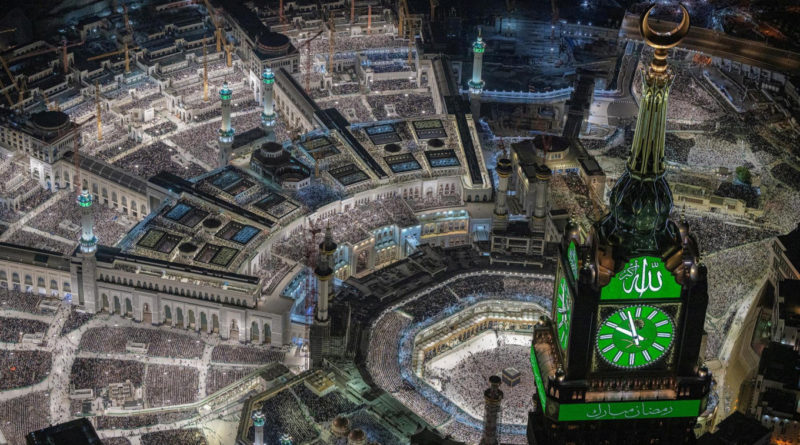
 Memento Maxima Digital Marketing
Memento Maxima Digital Marketing
